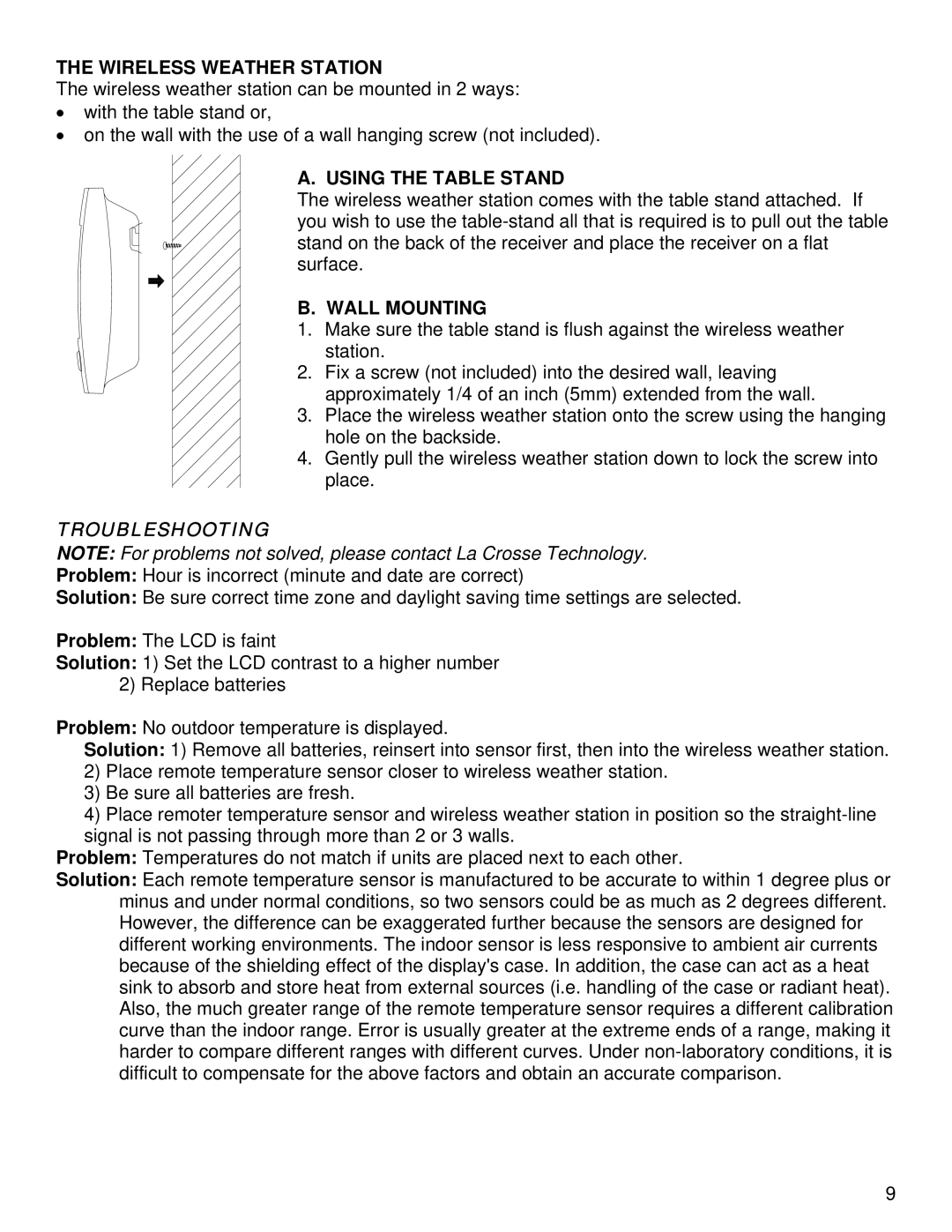
THE WIRELESS WEATHER STATION
The wireless weather station can be mounted in 2 ways:
•with the table stand or,
•on the wall with the use of a wall hanging screw (not included).
A. USING THE TABLE STAND
The wireless weather station comes with the table stand attached. If you wish to use the
B. WALL MOUNTING
1.Make sure the table stand is flush against the wireless weather station.
2.Fix a screw (not included) into the desired wall, leaving approximately 1/4 of an inch (5mm) extended from the wall.
3.Place the wireless weather station onto the screw using the hanging hole on the backside.
4.Gently pull the wireless weather station down to lock the screw into place.
TROUBLESHOOTING
NOTE: For problems not solved, please contact La Crosse Technology.
Problem: Hour is incorrect (minute and date are correct)
Solution: Be sure correct time zone and daylight saving time settings are selected.
Problem: The LCD is faint
Solution: 1) Set the LCD contrast to a higher number 2) Replace batteries
Problem: No outdoor temperature is displayed.
Solution: 1) Remove all batteries, reinsert into sensor first, then into the wireless weather station.
2)Place remote temperature sensor closer to wireless weather station.
3)Be sure all batteries are fresh.
4)Place remoter temperature sensor and wireless weather station in position so the
Problem: Temperatures do not match if units are placed next to each other.
Solution: Each remote temperature sensor is manufactured to be accurate to within 1 degree plus or minus and under normal conditions, so two sensors could be as much as 2 degrees different. However, the difference can be exaggerated further because the sensors are designed for different working environments. The indoor sensor is less responsive to ambient air currents because of the shielding effect of the display's case. In addition, the case can act as a heat sink to absorb and store heat from external sources (i.e. handling of the case or radiant heat). Also, the much greater range of the remote temperature sensor requires a different calibration curve than the indoor range. Error is usually greater at the extreme ends of a range, making it harder to compare different ranges with different curves. Under
9
